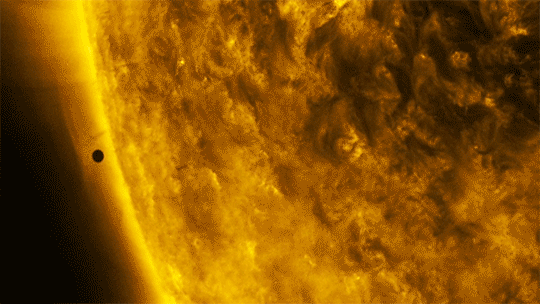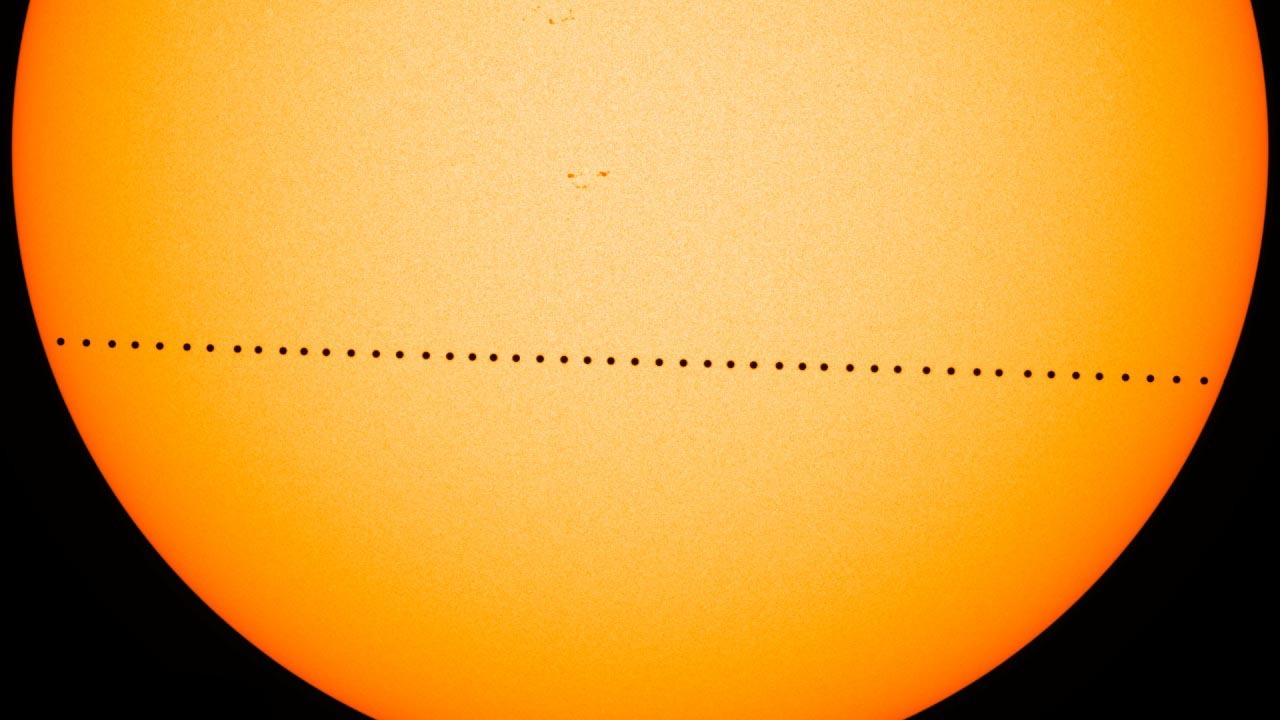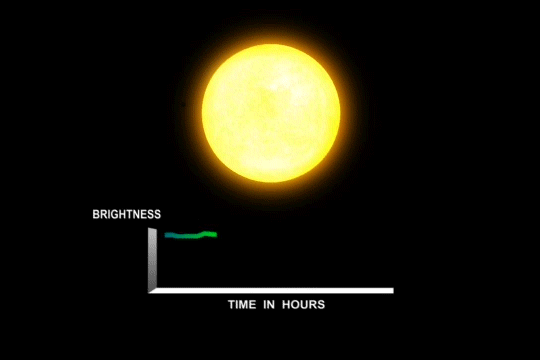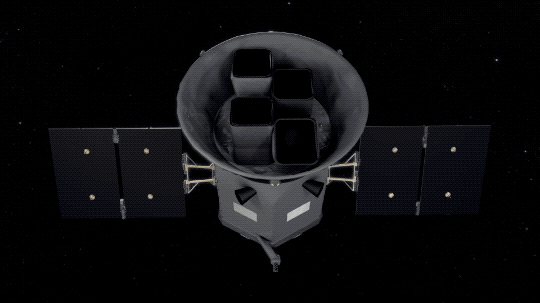November 11, 2019 - On Nov. 11, Earthlings will be treated to a rare cosmic event — a Mercury transit.

For about five and a half hours on Monday, Nov. 11 — from about 7:35 a.m. EST to 1:04 p.m. EST — Mercury will be visible from Earth as a tiny black dot crawling across the face of the Sun. This is a transit and it happens when Mercury lines up just right between the Sun and Earth.
Mercury transits happen about 13 times a century. Though it takes Mercury only about 88 days to zip around the Sun, its orbit is tilted, so it’s relatively rare for the Sun, Mercury and Earth to line up perfectly. The next Mercury transit isn’t until 2032 — and in the U.S., the next opportunity to catch a Mercury transit is in 2049!
How to watch
Our Solar Dynamics Observatory satellite, or SDO, will provide near-real time views of the transit. SDO keeps a constant eye on the Sun from its position in orbit around Earth to monitor and study the Sun’s changes, putting it in the front row for many eclipses and transits.
Visit mercurytransit.gsfc.nasa.gov to tune in!

Our Solar Dynamics Observatory also saw Mercury transit the Sun in 2016.
If you’re thinking of watching the transit from the ground, keep in mind that it is never safe to look directly at the Sun. Even with solar viewing glasses, Mercury is too small to be easily seen with the unaided eye. Your local astronomy club may have an opportunity to see the transit using specialized, properly-filtered solar telescopes — but remember that you cannot use a regular telescope or binoculars in conjunction with solar viewing glasses.
Transits in other star systems
Transiting planets outside our solar system are a key part of how we look for exoplanets.
Our Transiting Exoplanet Survey Satellite, or TESS, is NASA’s latest planet-hunter, observing the sky for new worlds in our cosmic neighborhood. TESS searches for these exoplanets, planets orbiting other stars, by using its four cameras to scan nearly the whole sky one section at a time. It monitors the brightness of stars for periodic dips caused by planets transiting those stars.

This is similar to Mercury’s transit across the Sun, but light-years away in other solar systems! So far, TESS has discovered 29 confirmed exoplanets using transits — with over 1,000 more candidates being studied by scientists!

Discover more transit and eclipse science at nasa.gov/transit, and tune in on Monday, Nov. 11, at mercurytransit.gsfc.nasa.gov.
Make sure to follow us on Tumblr for your regular dose of space: http://nasa.tumblr.com.
Source: NASA








